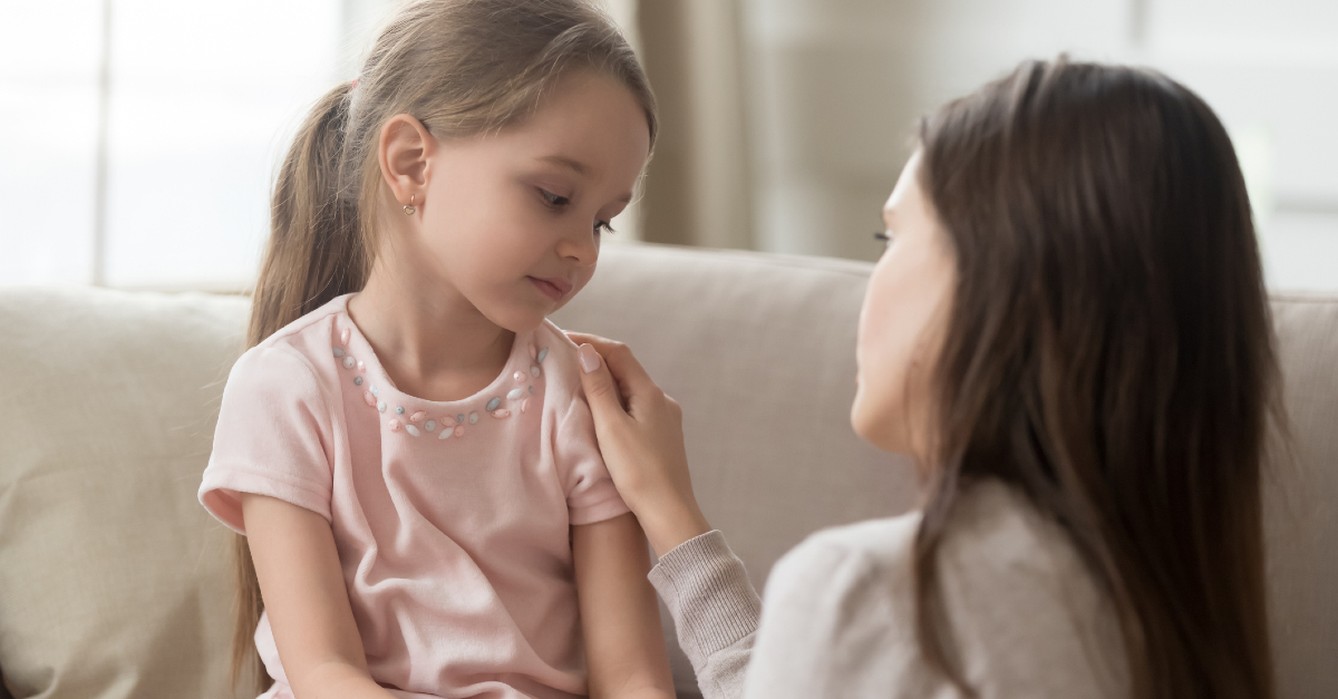5 Critical Rules to Teach Your Kids to Help Them Stay Safe
- Sarah Hamaker Crosswalk.com Contributing Writer
- Updated Mar 20, 2023

Since the 1960s, Americans have used the phrase “stranger danger” when discussing how to keep our children safe. Even the National Center for Missing and Exploited Children once employed “stranger danger” language to warn parents of the need for vigilance to keep their children from harm. From newspaper accounts to TV news stories to social media shares, American parents often hear about child kidnappings by strangers, creating a false narrative that this kind of thing happens all the time—and we must train our children about the dangers of strangers.
But the reality is very different. Statistically, child abductions by strangers are extremely rare. With 73 million minors in the United States, the chances of an unknown person snatching a child are around 1 in 2.5 million, according to 2019 U.S. Department of Justice stats. Don’t get me wrong—I’m not belittling the pain and suffering of those families whose children are kidnapped by a stranger. In this article, I will make a case for retiring the “stranger danger” mantra and outline a better way to safety-proof our children.
When my four children were young, I did not teach them to be cautious of strangers. I didn’t want them to view the world as a scary place. Instead, I wanted them to learn how to interact with strangers safely because we have to talk with strangers every day while going about our lives. What we want is to equip our children in these five ways to keep them safe:
-How to talk to a stranger
-How to identify a safe stranger
-What to do if they are lost
-What to do if someone makes them uncomfortable
-What our family safety plan is
1. Talking to a stranger.
I’ve always told my kids that talking to a stranger is fine. Then I gave my children lots of opportunities to talk to strangers at stores, yard sales, library, church, park, etc. All of my children were shy to one degree, and getting them to talk to a stranger could be challenging, but I persisted by not talking for them when they needed to talk. For example, if they wanted to buy something with their money at a yard sale, I would insist they approach the homeowner and negotiate themselves. When they wanted to find a particular book we couldn’t locate in the online card catalog, they approached the resource librarian to ask. Over time, they each gained confidence in their interactions with strangers and the message most strangers are good people.
However, we also frequently reiterated our kids were not to get in a vehicle or go with someone they didn’t know or know well without our express permission. In addition, we encouraged them to yell and run away if they felt scared or uncomfortable—and that we wouldn’t be angry if they made a mistake or if the grownup complained about their behavior.
2. Identifying safe strangers.
What happens if you’re not around and your child needs help? Who can they go to for help? We must help our children know who they should approach if they need assistance. For instance, uniformed law enforcement can be a good place to start. Ensure your child knows what a police officer or firefighter looks like in uniform. Many police stations and fire stations have open houses where you can attend to meet some officers, which can help your child identify a potential helper.
If a uniformed law enforcement officer isn’t around, I taught my children to find a woman with children and approach her. We used to play a game when we were at the mall or park—who could they go to for help if I wasn’t around or incapacitated? They learned to pick out mall security officers and moms they could go to for assistance.
3. Getting lost.
When my oldest child was in fifth grade, Naomi went on a bike ride and got hopelessly lost. We had no idea where she was but were getting concerned when a mom we didn’t know called with the location of our daughter. When I went to pick her up, the other mom praised my daughter for her relative composure in the face of being lost. When I asked Naomi about it on our way home, she told me she remembered what I had taught them—if they got lost, they should go to a cross street and wait there. When the other mom drove by and noticed her sitting there, she stopped to see if Naomi was okay, and Naomi asked her to call me, which the other mom did, and then waited with my daughter on the sidewalk for me to arrive.
The incident did shake up Naomi—no one wants to not know where they are—but it also gave her confidence that she could handle being lost and that her state of lostness was only temporary. But she would have been more lost if we hadn’t discussed many times what to do in a similar situation.
Here are three things to teach your kids about handling being lost. Use roleplaying to reinforce these ideas.
- Memorize your home address and phone number(s). Even if your child has a cell phone, he might not always have it with him. Knowing your home address and phone number is the first step to keeping your child from panicking when lost.
- Have an indoor and an outdoor plan. Naomi didn’t completely panic because she remembered what to do when she didn’t know where she was outside—find a corner where two streets intersected and wait there. We told our children to find the cash registers if lost in a store.
- Make sure they know to stay put. Once they’ve moved to a cross street or designated area, they were to stay there until help arrived. They could identify a safe person to ask for help, but they were to not go with that person to find me—I would come to them.
4. Being uncomfortable.

One of the most critical safety things we can teach our children is that they have control over their bodies. This means allowing them to decide who they give kisses and hugs to and who they accept kisses and hugs from. This also means sometimes, relatives or close family friends will push you to override your child’s decision not to hug or not to allow a kiss on the cheek. Even in the face of a grownup’s disappointment, you must stand firm and let your child—no matter how old—decide who has access to their bodies.
We did this with our children, even asking them most of the time if we could give them a hug or a kiss. Of course, we sometimes would forget and grab them in a hug or smother them with kisses—usually to their accompanying giggles—but we did try to reinforce the notion their bodies were their own. And yes, we had some uncomfortable moments when our children did not want to give or receive appropriate physical affection from beloved grandparents. But we stood firm, wanting our children to see we believed they had the right to decide.
While this isn’t a foolproof method for keeping our children safe, I think it does underscore something vitally important—that one reason sexual predators get away with their despicable deeds is that we’ve inadvertently trained our children that while they may not want to receive or give affection, they must if a trusted adult overrides their wishes. Let’s not give these people an easy path but instead gird our children with the authority to say no to any adult at any time, knowing their parents will back them up.
5. Developing a family safety plan.

While it’s important for children to know what to do in case of a household emergency, such as a fire, it’s equally important for kids to know what to do in case of a family emergency when the family isn’t together. Questions to consider are:
-Who is authorized to pick up your child from school?
-How will you communicate with your kids?
-Who can they call if you’re unavailable?
-What if they can’t get into the house—which neighbor has a key, or where is the emergency key stashed?
-What are the rules when a kid (of appropriate age) is home alone—can they answer the house phone? Door? Have friends over?
These are just some questions to consider and discuss with your children. You can also develop a House Rules list outlining the items discussed above and post it in a prominent place in the house.
Your children will be less likely to panic if you’ve made an effort through the years to talk about these issues. I’ve found having discussions about these topics often will prepare our children to face life’s uncertainties with less stress and more confidence. For example, after my daughter’s bike riding excursion that ended with her being lost, she told me that while she was scared, she didn’t fall apart completely because “I remembered what you told me and I knew you would find me”—even before the other mom stopped to help.
The methods I’ve outlined in this article also teach our children and teens to listen to their gut—that feeling we get that telegraphs this is unsafe or scary for us. We want our kids to follow those warnings without worrying about the repercussions or upsetting another adult or us. (For more on how your gut is a reliable indicator of potential danger, read The Gift of Fear by Gavin de Becker, a book I’ve found very helpful, especially for girls and women. In fact, I encouraged my two girls to read it while in high school.)
Rather than teaching your children strangers are dangerous, instead, teach them how to interact with the world in which we live safely. We can keep our children safe while raising them to be smart, confident, and kind members of their community.
Photo credit: ©GettyImages/Tgordievskaya




















